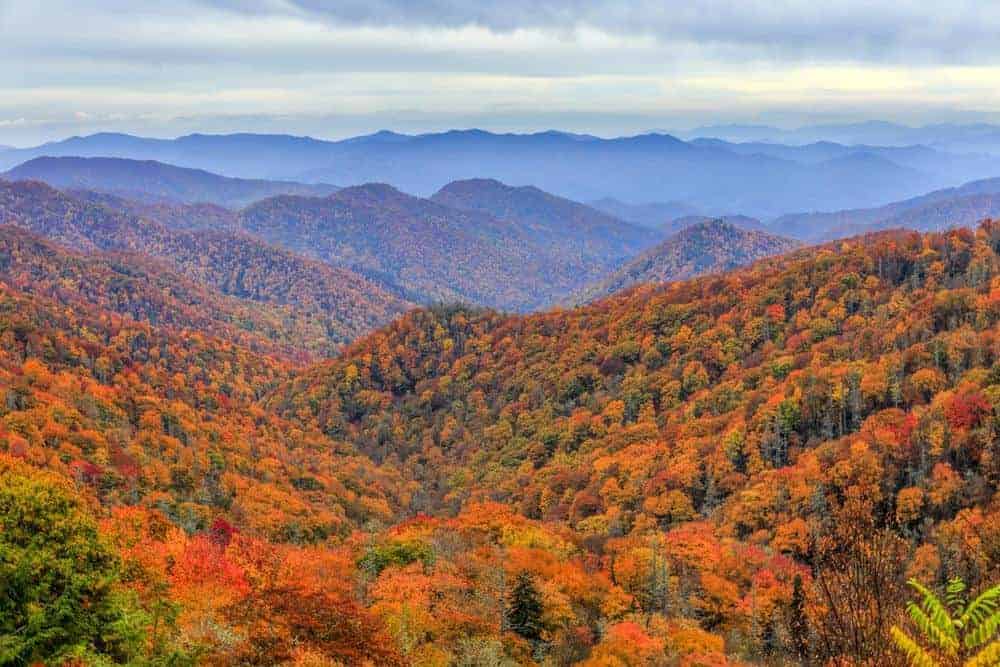
The Color Change
Autumn Is A Second Spring When Every Leaf Is A Flower. –Albert Camus
Why don’t you make like a tree and get out of here? — Biff Tannen
One of the greatest boons to living somewhere with distinct seasons is the fireworks show the trees give us every autumn. The reds, oranges, and yellows paint masterworks on a canvas composed of the horizon. Days become increasingly bleak as the planet tilts away from the sun, but the flourish of hue is one banger of a coda.
What causes the trees to shift from green ubiquity to majestic hot tones? If you were anything like me when I was young, you might have guessed colder temperatures cause leaves to shrivel and shed. While there is a correlation to chilliness, as we’ll see, the main culprit is something else entirely.

Trees create green leaves thanks to chlorophyll. The pigment is the magical chemical that allows photosynthesis to occur, the process by which plants convert sunlight into energy.
Chlorophyll isn’t the only pigment in the leaves of trees. Additionally, other major pigments in the appendages are Carotenoids, Xanthophylls, and Anthocyanins. These substances produce the oranges, yellows, reds, and purples visible in leaves during the autumn. Most of these pigments exist in the leaves alongside chlorophyll, but the green machine is so strong and present in such high levels that we cannot see the other colors during the summer. Only when the genetic instructions within the trees cause them to cut off chlorophyll production do the leaves create a color show.
Why and when does a tree shut down chlorophyll production for the winter?
The reason behind the shedding of leaves is not settled science. Hypotheses include high maintenance costs of maintaining leaves during harsh winters or an evolutionary defense mechanism against insects that might want to winter in green-leaved trees. For years, scientists ascribed solely to the maintenance theory, but recent studies point to a much more complex, but currently unexplained, situation.
Some of the pigments in leaves and the colors they create – image from NOAA
The “when” portion of the equation is more well understood.
Though colder temperatures and harsher weather tend to accompany the change in leaves, these attributes only have a secondary effect on trees. They can and do cause leaves to shed early or late, depending on the fairness of the conditions. However, the biggest trigger for trees in the autumn is the amount of light they receive each day!
This factor is nearly identical with every revolution around the sun, which is why trees tend to change each year around the same time. The other factors, temperature or storms, for example, can move the window slightly one way or the other, but the amount of light essentially tells a tree when to wrap up chlorophyll production for the season.
As the days shorten, trees begin to close the veins that allow fluid movement to and from the leaves. Inside the leaf, the chlorophyll starts to disintegrate before the other pigments. Suddenly, green cedes to the other, vibrant shades. This process is evident in leaves whose veins have closed recently; in the image below, chlorophyll still dominates the veinous areas but has started to disappear from the rest of the leaf.

The result is heaven for leaf peepers.
Now we know the reason is the amount of light a tree receives in the autumn. And knowing is half the bilateral symmetry battle. Enjoy this video of New England fall foliage!
Further Reading and Exploration
Science of Fall Colors – US Forest Service
Why Do Leaves Change Color? – NOAA
Nationwide Fall Foliage Prediction Map – SmokeyMountains.com

















Pingback: The Liquid Rainbow – themountainsarecalling.earth